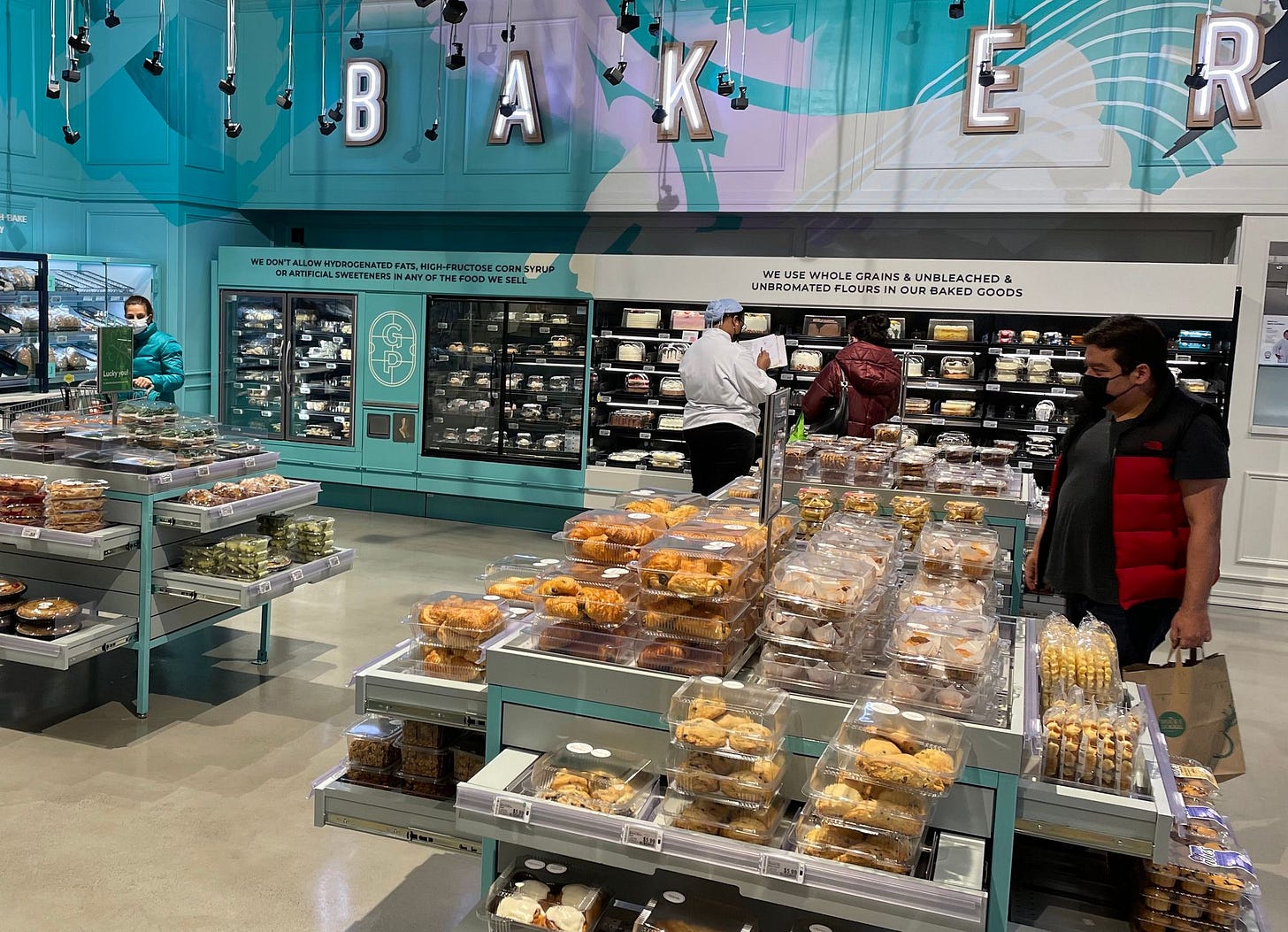Four reasons high inflation won't go away in 2022
Researchers expect rents to rise 7 percent in 2022.

Inflation in 2021 was the highest in four decades: 7 percent according to the Consumer Price Index or 5.8 percent according to the Personal Consumption Expenditures index. As the new year dawned, economists hoped and expected that we’d be able to get inflation back under control in 2022.
But over the last month, that has started to look increasingly unlikely. Even the Federal Reserve, which officially targets a 2 percent inflation (using the PCE inflation index), acknowledged on Wednesday that inflation was likely to come in way above target again this year. The central bank published new numbers predicting that PCE inflation would be 4.3 percent over the course of 2022. That’s a big increase from December’s estimate of 2.6 percent. But even this higher figure could easily prove too optimistic.
The most obvious reason is the price of oil, which has been driven upwards by war in Ukraine. But that’s not the only reason that inflation is likely to remain high in the coming year.
Reason 1: Expensive oil
In computing the CPI-U price index, the Bureau of Labor Statistics estimates that the average household spends a little less than 4 percent of its income on gasoline. That’s not very much in absolute terms. But when the price of gasoline soars by almost 50 percent, as it did in 2021, that directly adds almost two percentage points to the inflation rate.
Since December, gasoline prices have risen another 30 percent, from around $3.30 to around $4.30 per gallon. That directly adds 1 percentage point to the economy-wide inflation rate. If gasoline prices go up more, the impact will be larger.
Expensive oil also feeds into other prices. Most manufactured goods are transported using trucks that are run on fossil fuels. Fossil fuels are also inputs to a wide range of other industrial products. When oil gets expensive, some of these costs inevitably get passed on to consumers.
This chart, suggested to me by the Mercatus Center's David Beckworth, illustrates the connection. When the price of oil rises, so does the five-year breakeven inflation rate: the market’s estimate of the annual inflation rate over the next five years.
I’m not going to make any predictions about where oil or gasoline prices will go from here. It’s possible that the war in Ukraine will end soon and oil prices will start to come back down. It seems more likely that the war will continue and oil prices will continue going up. Either way, the price of oil has a big impact on the inflation rate. And it’s not something that either Joe Biden or Fed chairman Jerome Powell can control.
Reason 2: Rising rents
Over the last few months, there has been a striking divergence between rents estimated by private sources and those published by government agencies. For example, the Zillow Observed Rent Index shows rents rising by 16 percent over the course of 2021, while the Bureau of Labor Statistics estimates that rents for primary residences rose by only 3.3 percent in 2021.
Critics have pounced on this discrepancy as evidence that the BLS has been cooking the books to downplay the true extent of inflation. But there’s a non-sinister explanation: the two indices are measuring different things.
Zillow’s index measures "spot rents": the rents landlords charge to new tenants. Those rents did indeed skyrocket in 2021. But in any given month, most renters are not new tenants. Many have 12-month leases with fixed rents. And the BLS is trying to measure what people actually pay, not what they would pay if they suddenly rented a new apartment.
The practical impact of this is that it takes about a year for higher spot rents to be incorporated into leases as they come up for renewal.
The economists Marijn Bolhuis, Judd Cramer, and Larry Summers documented this effect in a February NBER paper. They found that the rental component of the CPI tends to follow private-sector rental data with a 13-month lag. This means that most of the rent inflation we’ll see in 2022 is already “baked in.” The researchers estimate that the rent components of both the CPI and PCE will show inflation of more than 7 percent over the course of 2022.
In addition to measuring rent paid by tenants, both indices include components for owner-equivalent rent—an estimate of how much homeowners would theoretically pay to rent their homes from themselves. Bolhuis and colleagues find that this measure roughly tracks home prices, but with a 16-month lag. So here too future inflation is baked in. The researchers project that the component of the CPI and PCE focused on owner-occupied homes will rise by more than 6 percent in 2022.
And this matters because shelter is one of the largest components of household budgets, accounting for about a third of the CPI. The researchers estimate that these increases in shelter costs will add 2.1 percentage points to overall CPI inflation and 1 percentage point to overall PCE inflation in 2022. That’s about twice what they contribute to inflation in a normal year.
Reason 3: Expensive wheat and corn
Russia accounts for 19 percent of global wheat exports, while Ukraine accounts for another 9 percent. Ukraine also accounts for 14 percent of global corn exports.
Last week, agricultural economist Aaron Smith wrote a good piece explaining the implications. He argues that the Ukraine war will be a significant shock to global food supplies but not an unprecedented one. He noted that wheat futures had risen by 10 to 30 percent since the Ukraine invasion, while corn prices were 7 percent higher.
That’s obviously going to exert upward pressure on food prices, and it could be devastating for lower-income countries that import a lot of Ukrainian wheat. But for Americans, the impact of higher food prices will be much less severe than expensive gasoline.
That’s partly because the cost of the raw commodities is only a small fraction of consumer food costs; much of it is in processing, packaging, and distribution. In fact, the USDA estimates that farmers in the US only get about 14 percent of every dollar consumers spend at the grocery store. So even a large increase in the price of wheat will only produce a modest increase in the cost of bread or breakfast cereal.
And of course wheat and corn are only two of many agricultural commodities that contribute to the American diet. Other agricultural commodities—including rice and soybeans—have not been significantly impacted by the Ukraine conflict. So to some extent, consumers will be able to replace temporarily-expensive food items with cheaper ones—something that’s much harder for a motorist to do when the price of gasoline goes up.
Reason 4: More supply chain disruptions
For the last year, anyone selling products with computer chips in them has been forced to cut back production. Apple is reportedly planning to produce 10 million fewer iPhones due to difficulties getting components. Shortages have driven higher prices for a wide variety of products.
And there’s every reason to think these problems will continue in the coming months:
On Monday, officials ordered the shutdown of most businesses in Shenzhen, China’s center for high-tech manufacturing, after a COVID outbreak. Among the companies hit was Foxconn, the contractor that builds many of Apple’s products. Shenzhen is now in the process of re-opening, and Foxconn says it has resumed some production in the city. The larger worry is that China’s zero-tolerance approach to COVID won’t work given the increased transmissibility of the Omicron variant. That could mean repeated shutdowns in Shenzhen and other Chinese cities in the coming weeks and months, disrupting supplies of any number of manufactured goods.
Ukraine is one of the world’s top producers of neon, which is necessary for semiconductor manufacturing. Those supplies have been disrupted by the war, and a recent Wired article argued that neon shortages could hamper the operation of chipmakers, though there wasn’t a consensus on how important this might be. (Thanks to Joseph Politano for suggesting this example)
An earthquake hit northeast Japan on Wednesday, forcing a number of factories to shut down and “adding to supply chain woes for makers of smartphones, electronics and automobiles worldwide,” according to Reuters.
In thinking about problems like this, it’s important to benchmark them properly. If I combed through news archives in 2015, 2017, or 2019, I could probably find examples where natural or manmade disasters disrupted various supply chains. It’s very possible that the electronics and car industries will quickly bounce back from these challenges.
But examples like this underscore why it’s difficult to draw a clear line between supply-side inflation and demand-side inflation. A big reason we can usually shrug off the economic implications of problems like these is because our supply chains have a healthy amount of spare capacity.
If you’re a carmaker in ordinary times and an earthquake shuts down the supplier of a key chip, you might have some extras in your warehouse. You might be able to get extra chips from another supplier. Your dealers probably have some spare inventory on their lots they can sell. Your own factories probably haven't been running at full capacity, so once chips do become available again you can boost production and catch up.
But thanks to surging demand over the past year, a lot of manufacturers today have little if any capacity to spare. Some have months-long backlogs. So when an earthquake or war or disease outbreak hits a key link in the supply chain, the effects often cascade all the way down to consumers.
The resulting shortages make it easy for producers to raise prices. And in a sense those higher prices are due to supply-side problems like an earthquake or war. But the system’s sensitivity to these kinds of shocks is itself the result of unusually strong demand.



